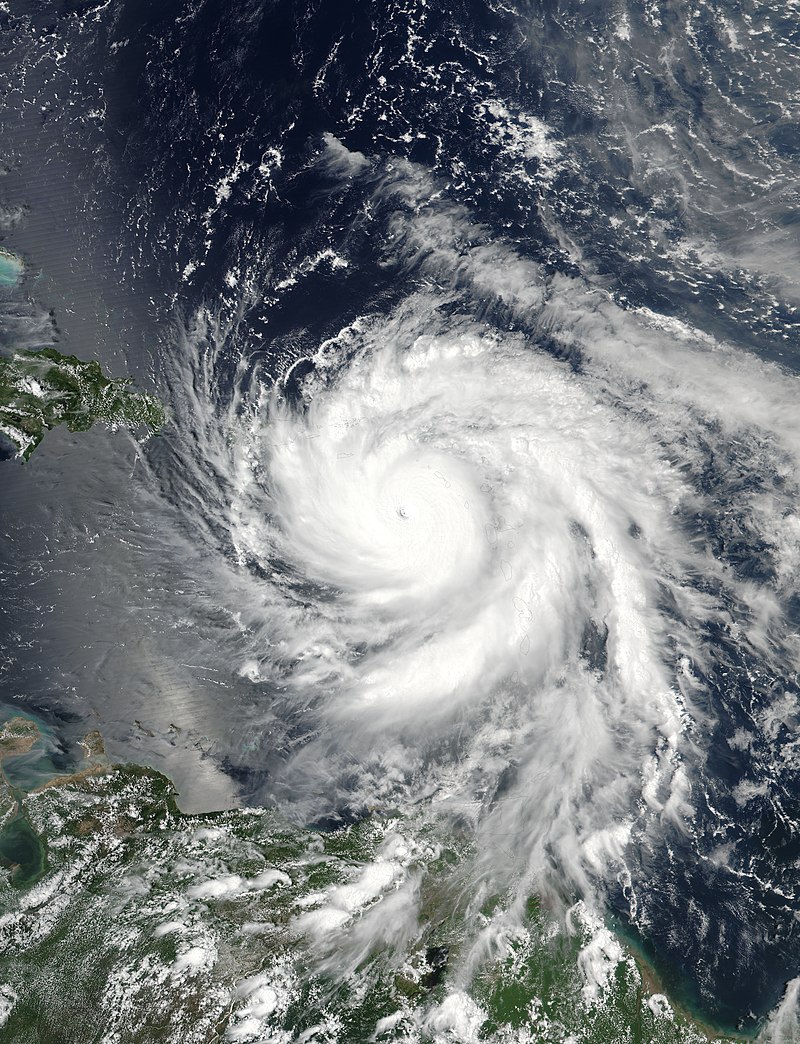Hurricane Maria, a catastrophic Category 5 hurricane, struck the northeastern Caribbean in September 2017, leaving a trail of destruction and claiming thousands of lives. This research article provides an in-depth analysis of the impacts of Hurricane Maria, focusing on the affected areas of Dominica, Saint Croix, and Puerto Rico. We explore the pre-landfall conditions, the devastating consequences during the hurricane’s passage, and the long-term aftermath, including the loss of life, damage incurred, and the extensive rebuilding efforts required. Additionally, we discuss essential measures to enhance preparedness and protect communities in the face of future hurricane threats.
Introduction: Hurricane Maria formed on September 16, 2017, east of the Lesser Antilles, and rapidly intensified to become a Category 5 hurricane just before making landfall on Dominica on September 18. With maximum sustained winds of 175 mph (282 km/h) and a pressure of 908 mbar (hPa; 26.81 inHg), Maria wreaked havoc on the island, destroying housing stock, infrastructure, and eradicating the lush vegetation. Guadeloupe and Martinique, neighboring islands, also experienced widespread flooding, damaged roofs, and uprooted trees during the storm’s passage.
Impact on Puerto Rico: As Maria approached Puerto Rico on September 20, it underwent an eyewall replacement cycle, slightly weakening to a high-end Category 4 hurricane. However, the island still suffered catastrophic damage and a major humanitarian crisis. The storm caused widespread flooding and a lack of resources, exacerbating the island’s vulnerabilities. The slow relief process compounded the difficulties faced by Puerto Rico’s population, leading to a major setback in recovery efforts. Notably, Maria caused the worst electrical blackout in US history, with power outages persisting for several months.
Loss of Life and Monetary Losses: The impact of Hurricane Maria on human lives was devastating. The total death toll reached 3,059 individuals, with Puerto Rico accounting for an estimated 2,975 fatalities. Dominica experienced 65 casualties, while the Dominican Republic, Guadeloupe, the contiguous United States, the United States Virgin Islands, and Haiti reported a combined total of 19 deaths. Maria became the deadliest hurricane in Dominica since the 1834 Padre Ruíz hurricane and the deadliest in Puerto Rico since the 1899 San Ciriaco hurricane. It stands as the deadliest named Atlantic hurricane of the 21st century to date.
Furthermore, Hurricane Maria caused extensive monetary losses, estimated at upwards of $91.61 billion (2017 USD). Puerto Rico bore the brunt of these losses, ranking Maria as the fourth-costliest tropical cyclone on record. The cost of cleaning and rebuilding was astronomical, requiring significant resources and long-term efforts.
Mitigation and Preparedness: To protect against future hurricane threats, it is crucial to focus on enhanced preparedness measures. Building resilient infrastructure, implementing robust evacuation plans, and improving early warning systems are essential components of disaster mitigation. Communities in hurricane-prone areas should prioritize reinforcing structures, securing loose objects, and developing emergency communication strategies. Additionally, individuals should stay informed about hurricane forecasts, create emergency kits, and have evacuation plans in place.
Interesting Fact: As a direct result of Hurricane Maria, Puerto Rico experienced a mass exodus of its population. In the aftermath of the storm, thousands of Puerto Ricans migrated to the mainland United States in search of better living conditions and opportunities. This migration significantly impacted the demographics and socioeconomic landscape of both Puerto Rico and the areas where displaced individuals resettled.
Conclusion: Hurricane Maria’s devastation in the northeastern Caribbean during the 2017 hurricane season was unparalleled. Dominica, Saint Croix, and Puerto Rico suffered immense destruction, loss of life, and long-lasting impacts. To mitigate the effects of future hurricanes, communities must invest in resilience measures and prioritize disaster preparedness. By learning from the lessons of Hurricane Maria, we can work towards building more resilient societies that can withstand and recover from the impacts of such natural disasters.




Leave a Reply